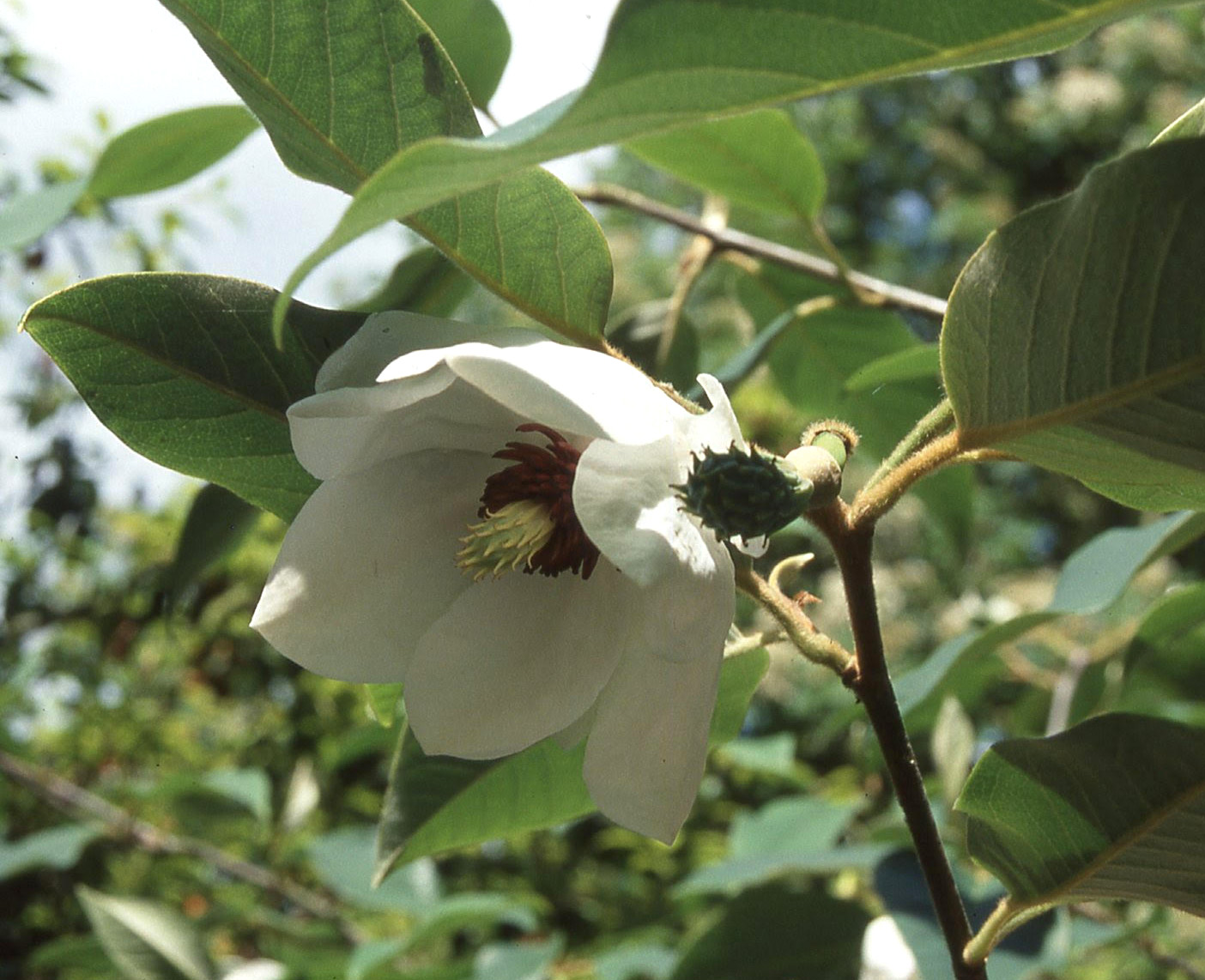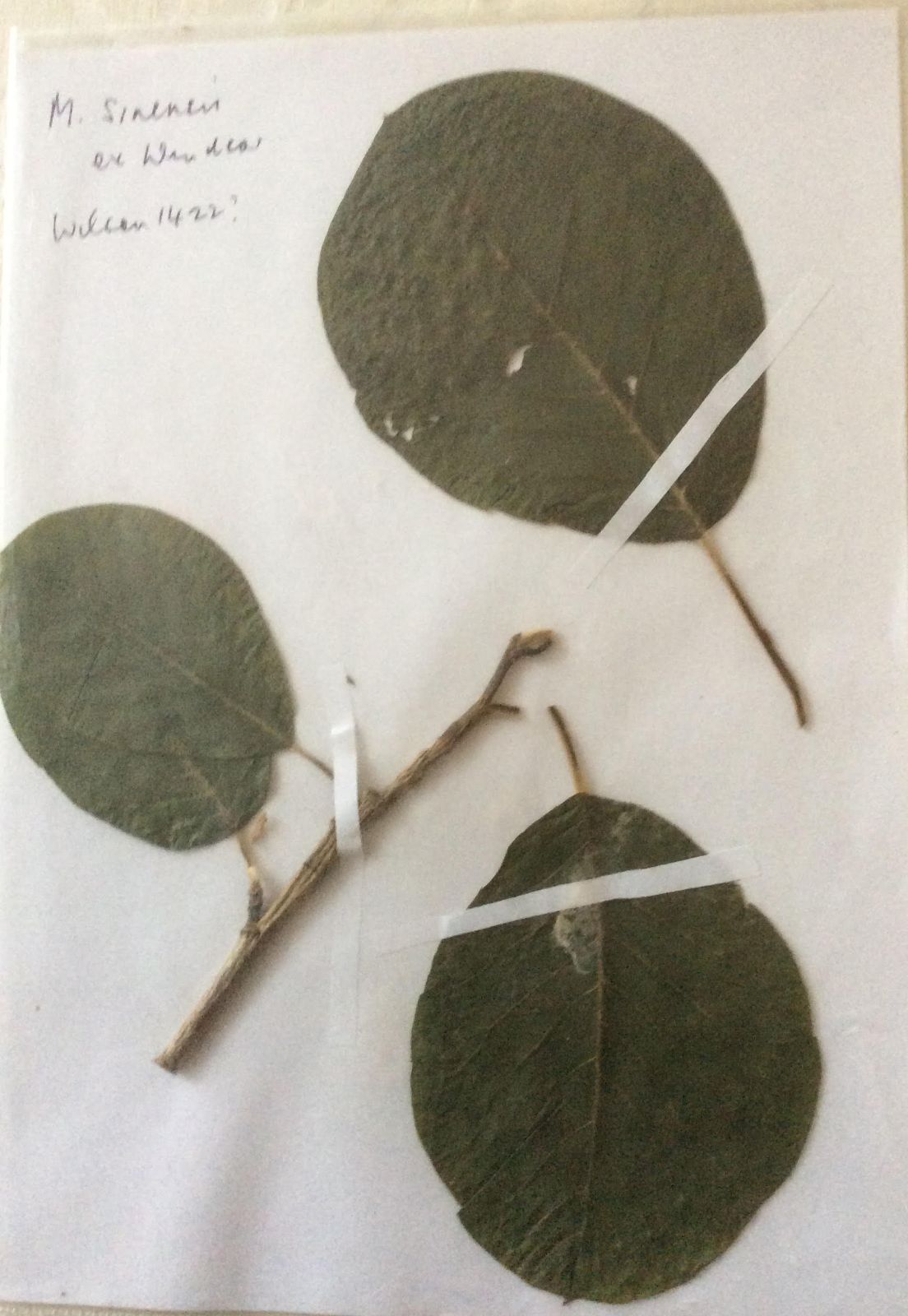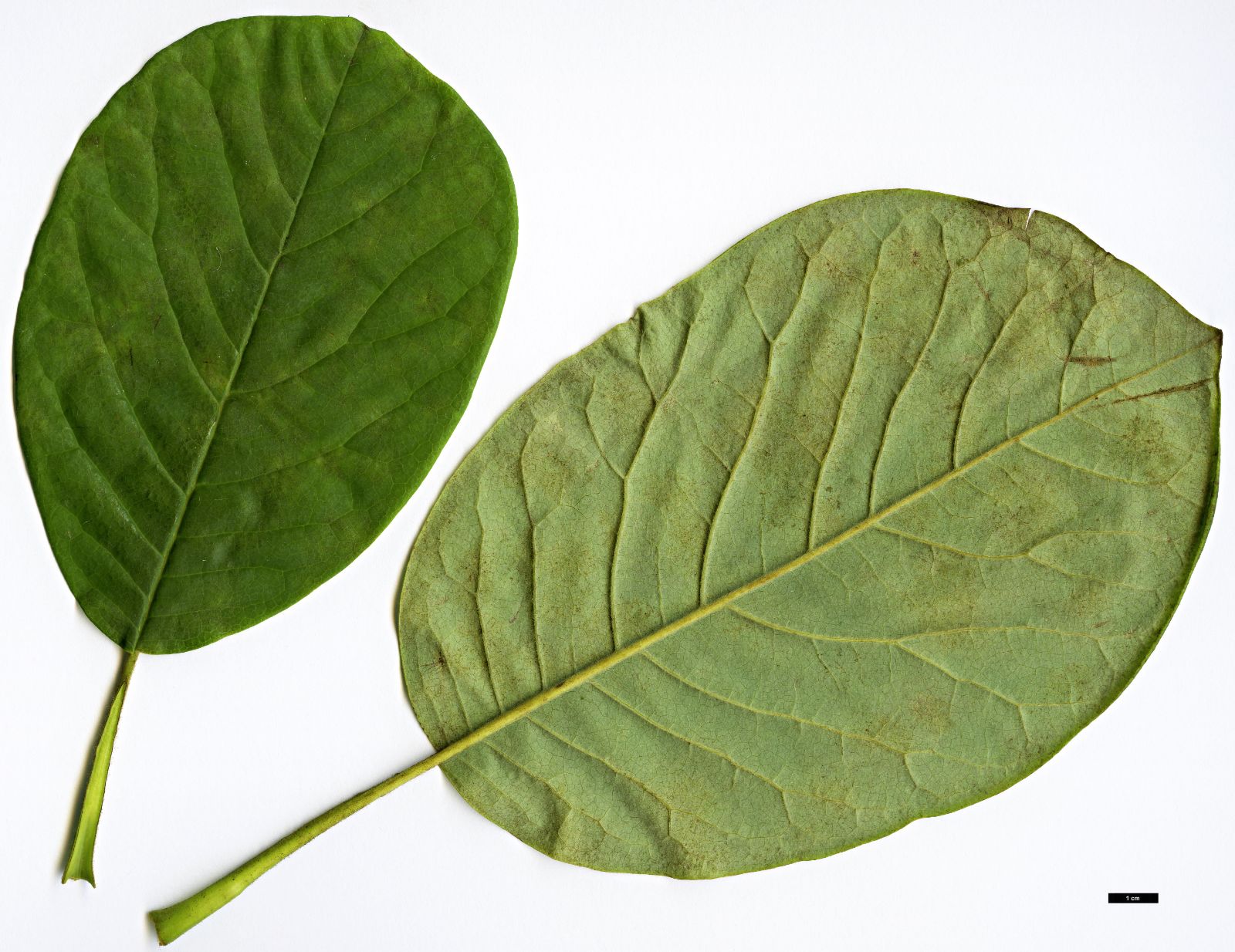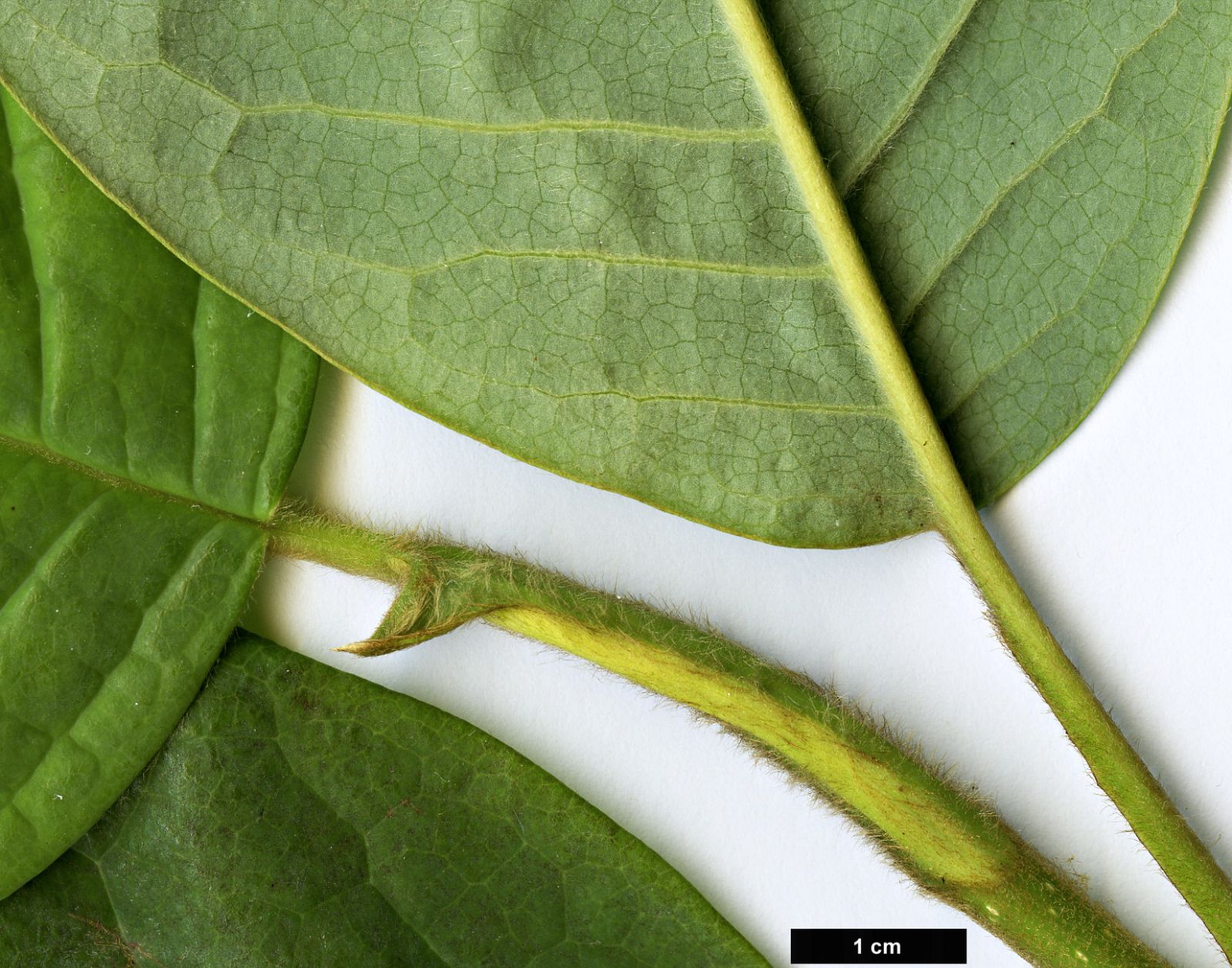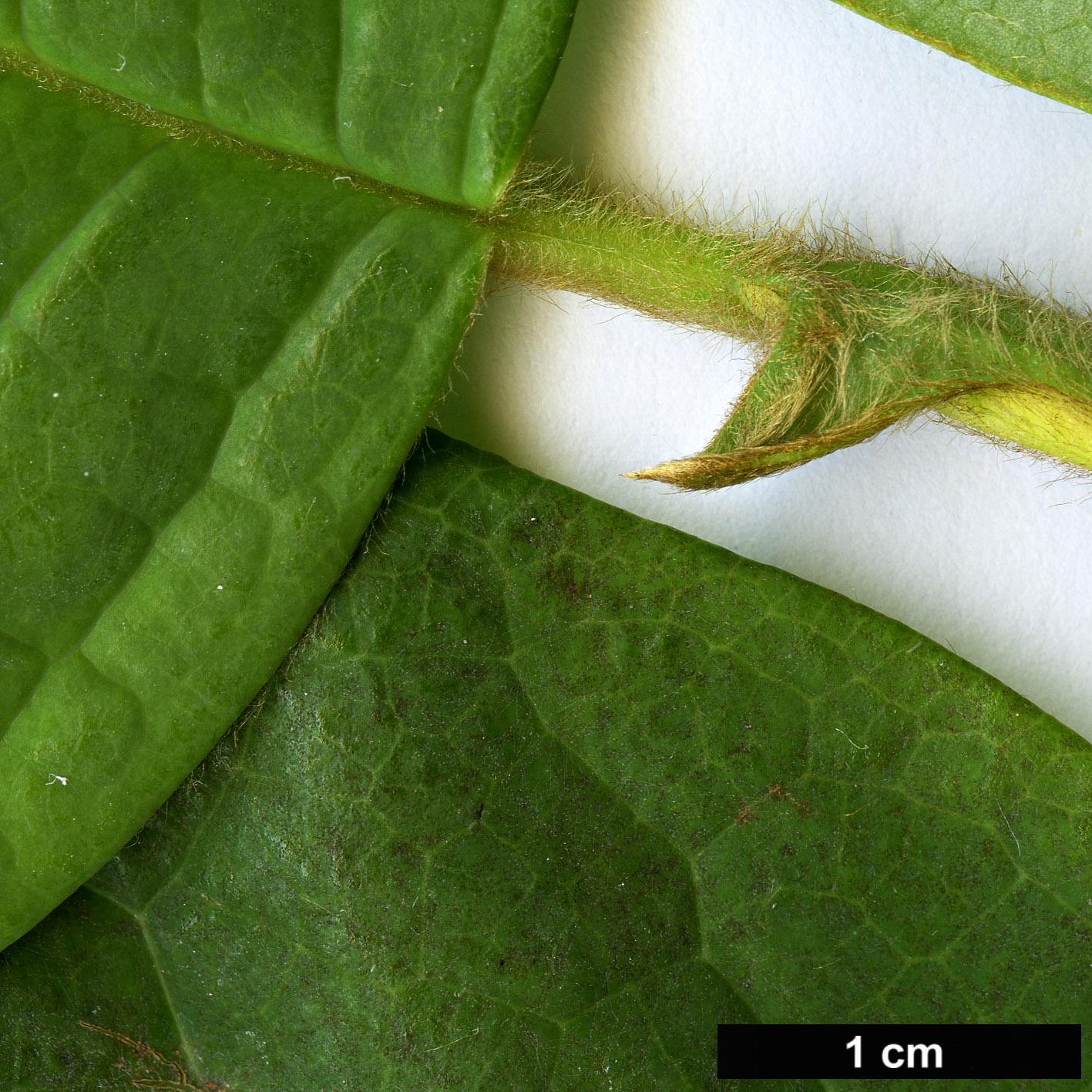Magnolia sinensis
Sponsor
Kindly sponsored by
The Roy Overland Charitable Trust

Credits
Julian Sutton (2022)
Recommended citation
Sutton, J. (2022), 'Magnolia sinensis' from the website Trees and Shrubs Online (treesandshrubsonline.
Genus
- Magnolia
- Section Oyama
Common Names
- Chinese Magnolia
- yuan ye tian nü hua
Synonyms
- Magnolia globosa var. sinensis Rehder & E.H.Wilson
- Magnolia nicholsoniana hort., not Rehder & E.H.Wilson
- Magnolia sieboldii subsp. sinensis (Rehder & E.H.Wilson) Spongberg
- Oyama sinensis (Rehder & E.H.Wilson) N.H. Xia & C.Y. Wu
Infraspecifics
Other taxa in genus
- Magnolia acuminata
- Magnolia × alba
- Magnolia amabilis
- Magnolia amoena
- Magnolia aromatica
- Magnolia biondii
- Magnolia × brooklynensis
- Magnolia campbellii
- Magnolia cathcartii
- Magnolia cavaleriei
- Magnolia caveana
- Magnolia champaca
- Magnolia changhungtana
- Magnolia chapensis
- Magnolia compressa
- Magnolia conifera
- Magnolia Cultivars A
- Magnolia Cultivars B
- Magnolia Cultivars C
- Magnolia Cultivars D
- Magnolia Cultivars E
- Magnolia Cultivars F
- Magnolia Cultivars G
- Magnolia Cultivars H–I
- Magnolia Cultivars J
- Magnolia Cultivars K
- Magnolia Cultivars L
- Magnolia Cultivars M
- Magnolia Cultivars N–O
- Magnolia Cultivars P
- Magnolia Cultivars Q–R
- Magnolia Cultivars S
- Magnolia Cultivars T
- Magnolia Cultivars U–V
- Magnolia Cultivars W–Z
- Magnolia cylindrica
- Magnolia dandyi
- Magnolia dawsoniana
- Magnolia de Vos and Kosar hybrids
- Magnolia decidua
- Magnolia delavayi
- Magnolia denudata
- Magnolia doltsopa
- Magnolia duclouxii
- Magnolia ernestii
- Magnolia figo
- Magnolia floribunda
- Magnolia × foggii
- Magnolia fordiana
- Magnolia foveolata
- Magnolia fraseri
- Magnolia fulva
- Magnolia globosa
- Magnolia × gotoburgensis
- Magnolia grandiflora
- Magnolia grandis
- Magnolia Gresham hybrids
- Magnolia guangdongensis
- Magnolia hookeri
- Magnolia insignis
- Magnolia Jury hybrids
- Magnolia × kewensis
- Magnolia kobus
- Magnolia kwangtungensis
- Magnolia laevifolia
- Magnolia lanuginosa
- Magnolia leveilleana
- Magnolia liliiflora
- Magnolia × loebneri
- Magnolia lotungensis
- Magnolia macclurei
- Magnolia macrophylla
- Magnolia martini
- Magnolia maudiae
- Magnolia nitida
- Magnolia obovata
- Magnolia officinalis
- Magnolia opipara
- Magnolia × proctoriana
- Magnolia × pruhoniciana
- Magnolia rostrata
- Magnolia salicifolia
- Magnolia sapaensis
- Magnolia sargentiana
- Magnolia sieboldii
- Magnolia sinica
- Magnolia sinostellata
- Magnolia × soulangeana
- Magnolia sprengeri
- Magnolia stellata
- Magnolia tamaulipana
- Magnolia × thomsoniana
- Magnolia tripetala
- Magnolia × veitchii
- Magnolia virginiana
- Magnolia × wieseneri
- Magnolia wilsonii
- Magnolia xinganensis
- Magnolia yunnanensis
- Magnolia yuyuanensis
- Magnolia zenii
Deciduous shrub to 6 m tall. Bark pale brown. First-year branchlets pale greyish-yellow, with yellow appressed hairs at first, 3–4 mm in diameter. Leaf blade obovate to obovate-elliptic, 8–13(–26) × 6–10(–19) cm, papery, with 9–13 veins on either side of midrib; lower surface with pale greyish-yellow hairs, upper surface with yellowish hairs on midvein and secondary veins; base rounded, broadly cuneate, or sometimes slightly cordate; apex broadly rounded to shortly acute. Petiole 1.5–4(–8) cm, pale yellow appressed villous; stipular scar nearly ⅖ as long as petiole. Peduncle 3–5 cm, yellow-villous at first. Flowers appearing with the leaves, cup-shaped, pendent, 8–12(–15) cm across, fragrant. Tepals 9(–10), white; outer 3 tepals ovate to elliptic, smaller than the inner; inner ones broadly obovate, 6–7.5 cm. Stamens purple-red, 0.9–1.3 cm. Gynoecium green, ovoid-cylindric, 1.5–2 cm. Fruit red, terete, 3.5–5(–7.5) × 2–2.5 cm, pendulous; mature carpels narrowly ellipsoid. beaks curved outward. Seeds ~6 mm. Flowering May–June, fruiting September–October (China). Diploid 2n=38. (Xia, Liu & Nooteboom 2008).
Distribution China Sichuan
Habitat Forests, 2000–2600 m.
USDA Hardiness Zone 6-9
RHS Hardiness Rating H6
Conservation status Vulnerable (VU)
Magnolia sinensis bears more than a passing resemblance to its fellow members of Section Oyama, MM. globosa, sieboldii and especially wilsonii. Usually a large shrub, it tends to be broad and straggling, although careful pruning can encourage it to develop into a shapely small tree (Treseder 1978). Its main attraction is the decisively pendent, fragrant white flowers with contrasting dark red stamens, borne after leaf emergence in early summer. As a wild plant its taxonomic status has proved troublesome, and there are real doubts over whether most garden plants represent the unhybridized species.
Whatever its taxonomic placement, the wild plant can be distinguished – just – from other taxa in Section Oyama, as follows. These distinctions are based primarily on the Flora of China treatment (Xia, Liu & Nooteboom 2008), the most recent botanical account but almost certainly not the last word on the subject: M. sinensis differs from M. sieboldii in having more secondary leaf veins (9–13 each side of the midrib vs. 6–8); in the stipular scar being slightly longer (about ⅔ vs. ½ as long as the petiole); and in the lower leaf surface having pale yellow villi (vs. brown and white multicellular trichomes, and yellow dots). It differs from both M. globosa and M. wilsonii in its leaves generally being broadest above the middle (vs. below the middle); in the stipular scar about ⅔ the length of the petiole (vs. almost as long); and in the lack of purple in the branchlets; and from M. globosa in its more definitely pendulous flowers opening more widely to saucer shaped (as opposed to cup- or egg-shaped), and its pale yellow (vs. rufous) hairs on the leaf undersides. M. wilsonii is certainly the closest to M. sinensis in general appearance, but the generally larger leaves of M. sinensis have a much more rounded outline often described as suborbicular; this last point is emphasized by Maurice Foster who has studied both the Wilson specimens and numerous cultivated oyamas. He writes ‘I have never in 50 years seen a M. wilsonii with leaves remotely of that rounded shape’ (pers. comm. 2022). Anybody seriously wishing to identify oyamas in cultivation should read as widely and critically as possible, bearing in mind all contradictions and inconsitencies among accounts. Treseder (1978), Callaway (1994) and Foster (2011, 2022) are good starting points in the garden literature.
M. sinensis became known to Western science and to gardeners through seed (see below) and herbarium specimens collected in W Sichuan by Ernest Wilson (W 1422 of 1908). Wilson noted that it was ‘always a shrub of straggling habit’ and ‘not uncommon in the moist woods and thickets of north-western Szech’uan’ (in Sargent 1913). It was initially described as a variety of M. globosa (Sargent 1913), later elevated to a full species by Stapf (1924); Wilson himself continued to emphasize its close affinities with M. globosa, feeling that even varietal status might be too high (Howard 1980) but this is not a mainstream view today.
Spongberg (1976) reinterpreted it as a subspecies of M. sieboldii, coming to this conclusion after comparing Wilson’s specimens with material taken from a plant grown as M. sieboldii in Massachusetts. His initial impression was that they ‘could well have come from a single gathering’, perhaps colouring his decision that the differences he later detected between M. sinensis and a broader range of wild and cultivated M. sieboldii specimens warranted only subspecific status. Contemporary botanical opinion is divided as to which approach to follow: Plants of the World Online (Royal Botanic Gardens, Kew 2021) accepts M. sieboldii subsp. sinensis, while Flora of China (Xia, Liu & Nooteboom 2008) and most East Asian literature treat it as a full species (although usually placed in the genus Oyama by Chinese authors). Horticultural usage is similarly split. While Edwards & Marshall (2019) and Gardiner (2000) follow Spongberg, Treseder (1978), Callaway (1994) and Foster (2011) prefer the full species; informal canvassing of opinion among magnolia enthusiasts while preparing this account revealed very little appetite for linking it to M. sieboldii. Molecular studies which included M. sinensis alongside other oyamas confirm their close relationship, but do not give a consistent picture of the relationships between them (Kim et al. 2001; Azuma et al. 2001; Nie et al. 2008); however, these were family-scale studies designed to reveal broad relationships rather than to answer this specific question. Even a highly focussed genetic study of subspecies divergence in M. sieboldii, which included both M. wilsonii and M. sinensis, yielded nothing conclusive about the position of M. sinensis (Kikuchi & Osone 2021). Foster (2022) explores the unresolved issue in detail. Here we uphold M. sinensis as a distinct species – with no great confidence – in the absence of compelling evidence as to its relationships.
Wilson’s seed collection was sent to the Arnold Arboretum, and resulting plants were among the Chinese magnolias sent to Léon Chenault in France for propagation. Early, enduring confusion was caused by muddling of names and numbers at some stage of the process. Chenault initially distributed M. sinensis in Europe, around 1920, as M. nicholsoniana (a synonym of M. wilsonii, and under which name M. wilsonii itself was also being grown). Wilson himself (not the most orderly record keeper) seems to have at some point linked the seed to his number 838a, 838 being linked to M. nicholsoniana (Howard 1980). These first plants gained a reputation for being weak and tricky, perhaps the result of using an oyama rootstock, but later propagations proved it to be a straightforward plant to grow, tolerant even of chalky soils, and less susceptible to bright light and dry soil than its relatives (Bean 1981; Treseder 1978; Foster 2011). However, a long and ignominious history of seed-raising from plants grown alongside M. wilsonii, lost labels and inadequate record-keeping has led to many (if not most) garden plants now grown as M. sinensis potentially being hybrids with M. wilsonii. A fine, large flowered clone grown internationally as M. sinensis is probably a plant at one time labelled M. s. ‘Grandiflora’ in the nursery trade; it too might be a hybrid (Foster 2022). Further study is needed, and established records should be approached with eyes and mind open. Foster (2011) noted that there are rare examples of cultivated plants matching the type specimen at the Savill and Valley Gardens, Windsor, representing a single clone of unknown origin: these had the suborbicular shape mentioned above (pers. comm. 2022). Later wild collections were conspicuous by their absence until an introduction by the 2017 NACPEC expedition to Sichuan; young specimens at the Arnold Arboretum and Sonoma Botanical Garden will be worth watching (Arnold Arboretum 2022; Quarryhill Botanical Garden 2022). Mikinori Ogisu made a further wild collection in 2018; seed was germinated at the Sir Harold Hillier Gardens, Hampshire, and the leaves appear true to type (Edwards & Marshall 2019; Foster 2022).
'Findlay's Form'
A plant found in Scottish gardens with particularly large, pendent flowers, with a strong second flush during August; it is usually placed under this species, although the usual uncertainties around hybridization apply. Origin unclear; the cultivar name, using the word ‘Form’, is probably invalid.
'Ursula Grau'
A seedling with semi-double, nodding, camellia-like flowers earlier in May than is usual, with a strong second flowering in August. Origin unknown, before 1993.

